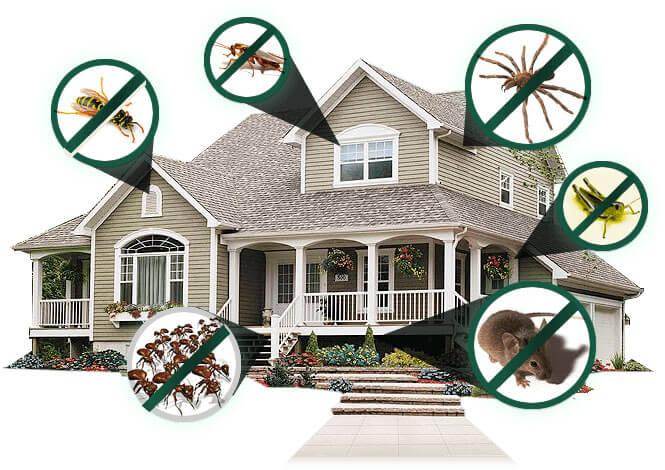Dependable A1 Bed Bug Exterminator Charlotte - Eliminate Bed Bugs Quick
Wiki Article
Bed Insect Treatment Malfunction: Comparing Chemical Vs. Non-Chemical Solutions
In the world of insect control, particularly when managing the relentless issue of bed insects, the choice between chemical and non-chemical therapy remedies can be a critical one. Both approaches provide distinctive advantages and downsides, influencing elements such as performance, security factors to consider, and total price. By checking out the nuanced information of each approach, a more clear understanding of which course to seek in addressing a bed pest invasion can be acquired.Performance of Chemical Therapies
Chemical treatments for bed bug infestations have been extensively acknowledged for their fast and powerful effectiveness in removing these bugs. When taking into consideration the effectiveness of chemical treatments, it is essential to understand that they can give a comprehensive and fast option to a bed bug problem.Moreover, chemical treatments have the benefit of providing recurring impacts, indicating that they can proceed to get rid of bed bugs also after the initial application. This recurring action is particularly advantageous in combating any type of potential re-infestations. Additionally, the quick activity of chemical treatments can bring alleviation to people facing serious bed pest problems, permitting them to restore control of their space quickly.
Safety Issues With Chemical Solutions
One crucial aspect that calls for careful factor to consider when utilizing chemical options for bed bug treatment is ensuring the safety and security of residents and the atmosphere. While chemical therapies can be efficient in eliminating bed bugs, they may present dangers otherwise handled correctly. One of the key security worry about chemical options is the possible injury they can cause to human wellness. Exposure to particular chemicals used in bed insect treatments can lead to respiratory system concerns, skin irritation, or various other adverse responses, especially in individuals with pre-existing conditions or level of sensitivities. Furthermore, improper application or dosage of chemical pesticides can cause poisonous deposits remaining in the cured area, positioning long-term health threats to owners.In addition, the environmental impact of chemical solutions is one more significant factor to consider. Some chemicals used in bed bug treatments might be harmful to useful insects, wild animals, and environments if they seep right into the dirt or water supply. It is necessary to utilize chemical treatments deliberately, following security guidelines, and taking into consideration site link less hazardous alternatives to mitigate these threats and guarantee the effective and safe monitoring of bed pest infestations.
Benefits of Non-Chemical Techniques
Considering the possible security worries and environmental effect connected with chemical services for bed pest treatment, exploring non-chemical approaches offers an encouraging choice with numerous distinct advantages. Non-chemical treatments are ecologically friendly, as they do effective pest control not contribute to air or water contamination, making them a sustainable selection for bug control.In addition, non-chemical options can be efficient in targeting bed insects, including hard-to-reach locations where chemical treatments might not pass through - A1 bed bug treatment in charlotte. Methods such as heat therapy, vacuuming, steam cleaning, and cushion encasements give detailed obliteration without the usage of hazardous chemicals.
Limitations of Non-Chemical Treatments

Additionally, non-chemical therapies usually need several applications to accomplish effective obliteration. This can be time-consuming and might not constantly ensure total elimination of all bed bugs and their eggs, especially in hard-to-reach or hidden locations.
Moreover, the success of non-chemical therapies heavily depends on correct application and thoroughness, which can be challenging for people without professional competence. Inadequate application of non-chemical methods may cause insufficient eradication, leading to persistent invasions and the requirement for added treatments.
Consequently, while non-chemical therapies have their benefits, it is necessary to recognize these limitations page and consider them when identifying the most efficient technique for taking care of bed pest infestations.
Price Comparison: Chemical Vs. Non-Chemical Options
Given the constraints connected with non-chemical therapies, a crucial element to assess in the context of bed insect monitoring is the expense contrast between chemical and non-chemical choices. In comparison, non-chemical treatments like warmth treatment or vapor can be extra costly, with costs varying from $1,000 to $6,000 for a whole home. While the preliminary expense of chemical therapies might seem reduced, numerous therapies might be needed to completely eradicate the problem, potentially raising the total cost.Conclusion

Considering the prospective safety and security issues and ecological impact connected with chemical solutions for bed insect treatment, discovering non-chemical techniques presents a promising option with several distinctive advantages.Given the restrictions linked with non-chemical treatments, a crucial element to review in the context of bed bug management is the price comparison between chemical and non-chemical alternatives. In comparison, non-chemical therapies like warmth treatment or vapor can be much more pricey, with costs ranging from $1,000 to $6,000 for a whole home. While the preliminary price of chemical treatments may appear reduced, several treatments might be called for to fully eliminate the problem, potentially increasing the total price.In conclusion, when comparing chemical and non-chemical bed insect treatment choices, it is important to take into consideration efficiency, security, benefits, restrictions, and expense.
Report this wiki page